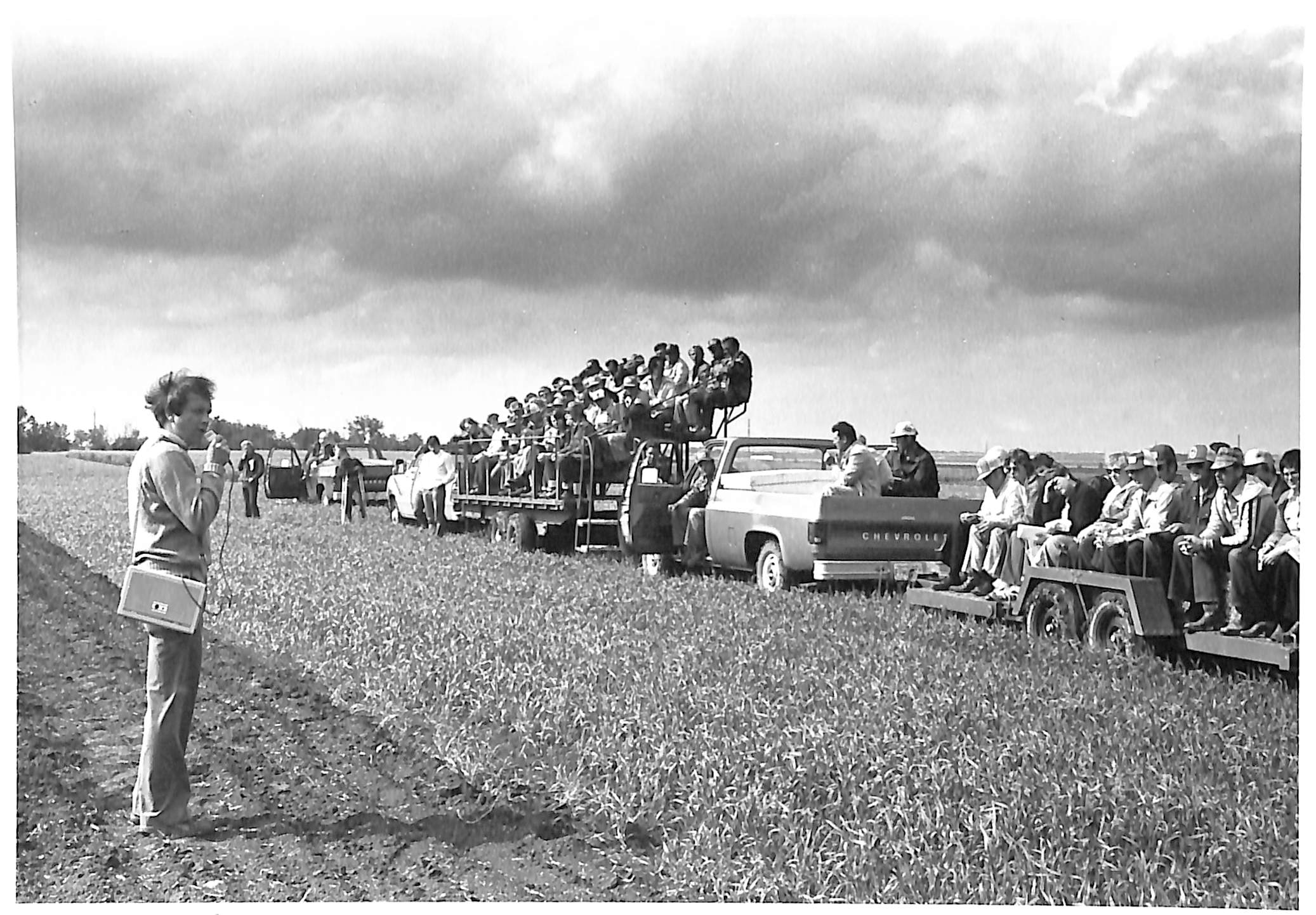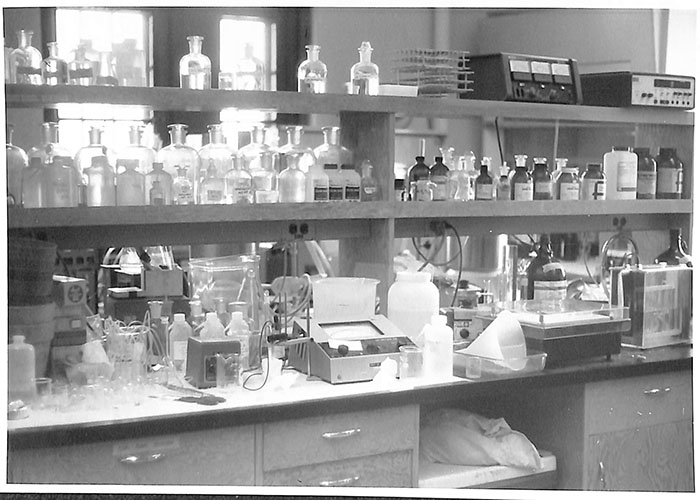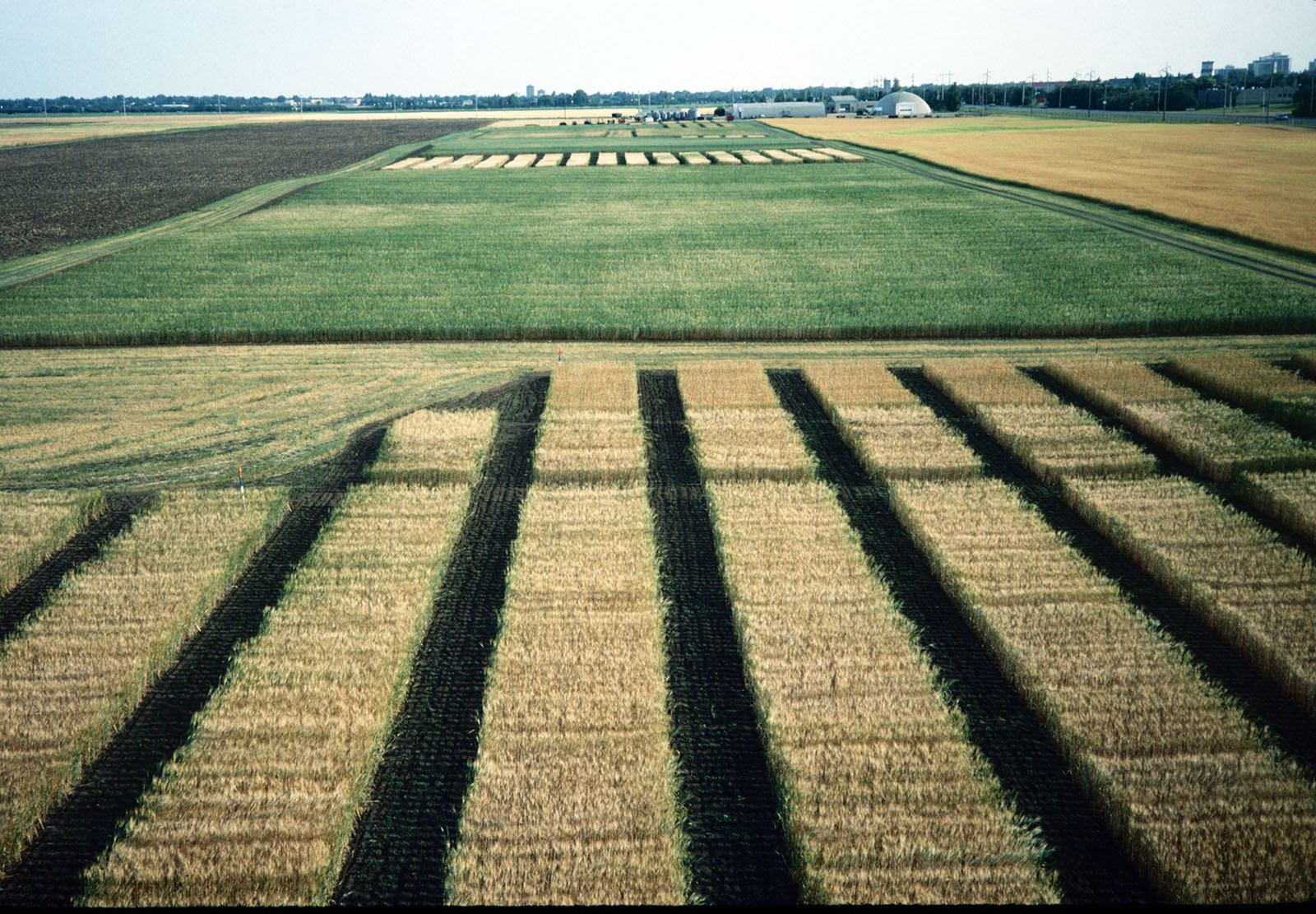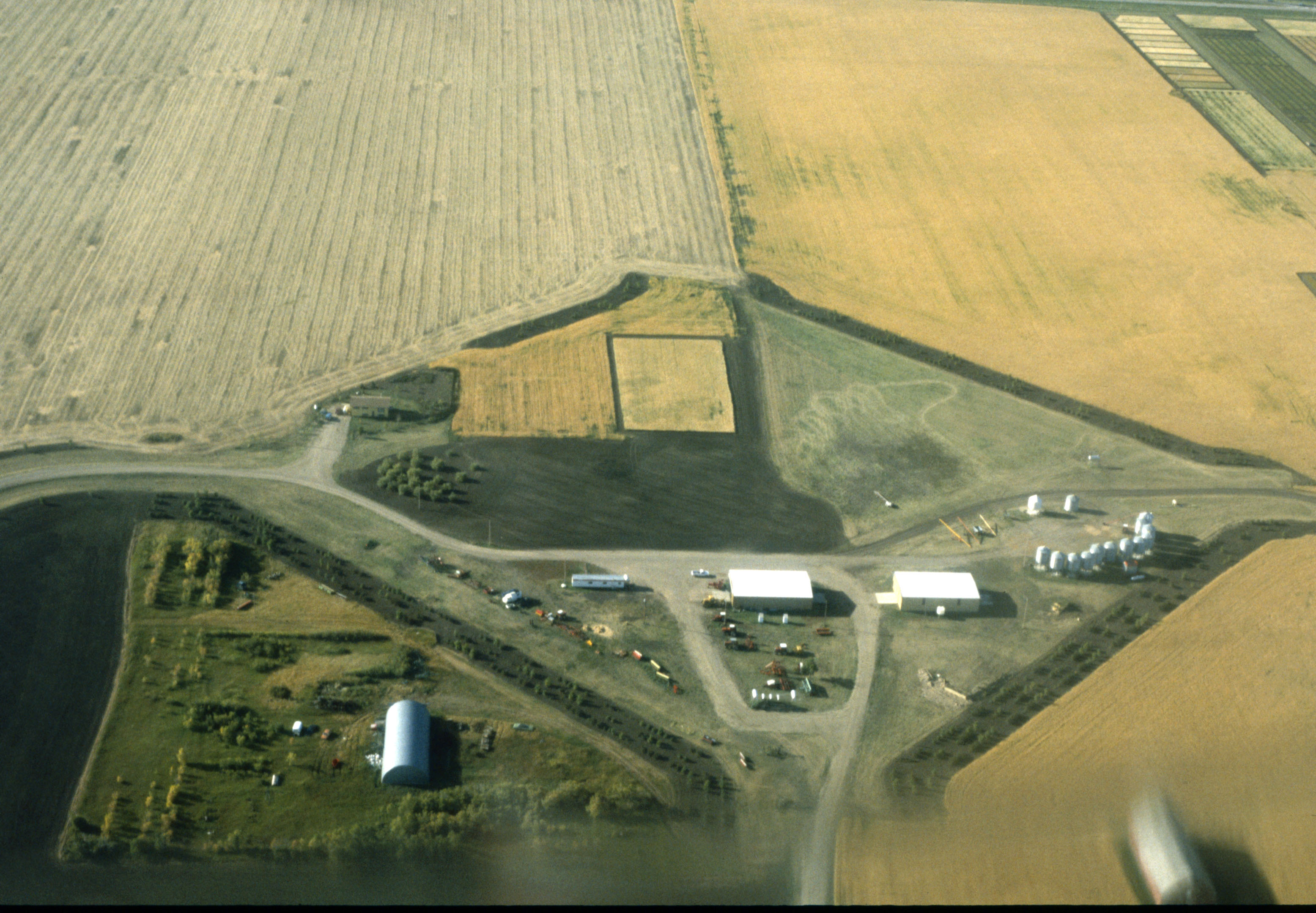
1980s
New CDC varieties are sown.
By Kathy Fitzpatrick“I’m the luckiest guy in the world,” pulse breeder Dr. Al Slinkard (PhD) says, eyes twinkling. Skill and timing were the common elements that catapulted not only the green Laird lentil to market dominance, but also Harrington two-row malt barley and Vimy flax – two other early releases by the Crop Development Centre. In all three cases, their spectacular success was ushered in by superior traits combined with events such as droughts and crop failures of established varieties.
Arriving at the Crop Development Centre in 1972, Slinkard learned that here in Saskatchewan a couple of farmers had already tried growing lentils, “but they didn’t know what they were doing and it sort of flopped.” On top of that, the price was “ridiculous” Slinkard recalls: four cents per pound.
But in 1978, the year the Laird lentil was released, the Palouse area straddling Washington and Idaho states suffered an “unprecedented drought” he says. Buyers turned to Saskatchewan and the average price shot up to 35 cents per pound. Bruce Cheston, a farmer in the Grand Coulee area west of Regina, had grown two fields of lentils with a yield of 1800 pounds per acre, grossing more than $600 an acre “and here the wheat grower across the road (would be) lucky to get $100,” Slinkard says.
That winter Slinkard criss-crossed the province giving talks to farmers three or four times a week, finding an eager audience. By the late 1980’s Slinkard was able to report that the variety he developed, the Laird lentil “is the most widely grown lentil variety in the world.”
The large-seeded Laird was quickly followed by Eston, a small-seeded green lentil, released in 1980. Meanwhile, Slinkard writes, “detailed agronomic studies were conducted on seeding rate, seeding date, inoculation with nitrogen-fixing bacteria, weed control, fungicide seed-treatment, seedbed preparation, phosphate fertilization, salinity tolerance and Soil Zone adaptation.”

Harrington barley, released in 1981, was next to capture world attention. The first high enzyme two-row malting barley suited to growing conditions in Western Canada, Harrington came out during a world barley shortage, recalls Dr. Bryan Harvey (PhD), who led the work to develop it.
Among its superior attributes, Harrington could be malted (germinated and dried) two days faster than other varieties, resulting in a 20 per cent boost in capacity at malting plants. And, because Harrington had no dormancy period before germinating, less storage area was needed at the malt plants. Its high-enzyme property, combined with the greater efficiency of a more uniform kernel size than six-row varieties, made it an attractive choice in countries such as China (which in subsequent decades would become the world’s largest beer producer).
“It was obviously a success story that we could brag about,” Harvey says, and made Saskatchewan “a major player” in exporting malting barley in terms of both quantity and quality.

Harrington was the number one two-row malt variety in western Canada from 1985 to 2001, according to certified seed supplier SeCan. At its peak, a University of Saskatchewan publication notes, “Harrington took up 60 per cent of the barley acreage across Western Canada and 40 per cent in the United States.”
In 1986 flax-breeder Dr. Gordon Rowland’s (PhD) first variety, Vimy, was released. Saskatchewan producers soon saw how well it performed under drought conditions. This, and subsequent CDC varieties, would transform Saskatchewan from a bit-player to Canada’s top producer.
Calibre oat, developed by Dr. Brian Rossnagel (PhD) and released in 1983, became another marquee variety, by late in the decade becoming the most popular in Saskatchewan, comprising one third of commercial acreage. Derby, released in 1988, was a further improvement. Together, they came to dominate in both Saskatchewan and Alberta into the following decade.
During the 1980’s the CDC released many other crop varieties – hard red spring wheat, durum, two-row and six-row feed barley, the first Canadian hulless barley, faba beans, red lentil, and a yellow field pea (Bellevue in 1986). By 1987, Saskatchewan would become the leading province in pea production, reaching 380,000 acres (from just 1,000 acres in 1967).

New projects included weed control, development of an edible oil flax, and an annual canarygrass breeding program.
Two facilities invaluable to the work of CDC staff were the Kernen and Goodale research farms, both developed from lands acquired by the university during the previous decade. The John Goodale farm, seven quarter-sections located southeast of Saskatoon near the tiny community of Floral, was purchased in 1972. The Kernen farm was the gift of two sections of land one mile east of Saskatoon on Highway 5 by Fred W. Kernen, a graduate of the College of Agriculture and part-time extensionist with the Department of Crop Science.
Dr. Herman Austenson (PhD), who became head of the Crop Science and Plant Ecology Department and also headed the Crop Development Centre (from 1975-83), negotiated the acquisition of both farms. Art Wenhardt, field superintendant at the U of S, also played a role in the Kernen negotiations. He became manager of Goodale, directing its transformation from run-down farm to research facility.

As for the Kernen land, Rossnagel says having been rented for many years, “it was a terrible weedy mess … We worked very diligently for about three or four years to get it into the condition that we could really
use it for research purposes, plant breeding purposes in particular.”
But once cleaned up, it “has been a major boon to all of the operations of the Crop Development Centre over my whole career.”
Dr. Pierre Hucl (PhD), former interim director of the CDC, recalls that “we operated out of an ATCO trailer at Kernen – with limited plumbing options.”
By the spring of 1986, the newlyconstructed Kernen Field Headquarters building opened, providing much improved conditions as well as space to relieve overcrowding in the Crop Science Field Laboratory.
Meanwhile, the CDC was also helping to transform cropland across Saskatchewan, encouraging farmers to switch from summer fallowing to seeding into stubble. Slinkard writes that in the 1970’s Cheston had already demonstrated that “lentils can be successfully grown on wheat stubble in the Brown and Dark Brown soil zones.”
The work of plant breeder Dr. D. Brian Fowler (PhD) and plant physiologist Dr. Larry Gusta (PhD) on winter
wheat was to lead in the same direction.
“The key to successfully overwintering winter wheat here is to keep the snow on the field,” Fowler explains. “Of course the snow all blew off on the summer fallow fields.”
Meanwhile, breakthroughs in the development of new winter wheat varieties would come in the subsequent decade.
